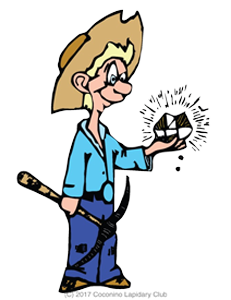In the presentation of photos of specimens of various garnets the source of the photo is referenced. For more or supporting images, Google the name of the mineral and the word image to see a gallery of additional images.
Almandine Garnets
Specimens from the classic localities of Wrangall Island, Alaska and Tyrol, Austria as well as those of very large size from the Salida Mine, Salida, Chaffee County, Colorado have long attracted collectors.
[metaslider id=”1476″]
Pyrope Garnets
Rhodolite garnet, the raspberry red to purplish red variety of Pyrope, as shown in figure 20, was first discovered and described from Cowee Valley, Macon County, North Carolina. Now considered a classic locality. Bohemian garnets from the Czech Republic, with their glossy red color, as shown in Figure 21, were first marketed in the 17th century. Newer finds in Madagascar, Brazil, and Arizona are current sources of Pyrope garnets.
[metaslider id=”1490″]
Spessartine Garnets
Orange Spessartine Garnets associated with Smokey quartz from China are greatly desired by collectors. The vividly orange-colored Spessartine, single crystal \pessartine garnets, many displaying perfect forms, from both Tanzania and Nigeria are also prized. Crystals of red Spessartine Garnets, from Brazil, with their complex multi-faced faces present unique crystal forms.
[metaslider id=”1502″]
Andradite Garnets
The gem varieties of Andradite garnets, the green demantoid, the honey-colored topazolite, and black melanite, respectively from Madagascar, Canada, and California are not only prized as gemstones, but also by collectors. Also coveted are the beautiful green Andradite specimens from Stanley Butte in Arizona as well as the brown andradite garnets from Mali and Greece.
[metaslider id=1516]
Grossular Garnets
The classic Grossular garnet specimens, from the Jeffery Mine in Quebec, with their pristine crystals and colors, which range from colorless through pink, honey-brown, and green, are highly regarded by specimen and gemstone collectors. The pink ,manganese-rich, Grossular garnets and their iron-rich companions from Coahuila, Mexico, are also prized by collectors. The startling green Tsavorite gem variety of Grossular garnets from Tanzania also appeal to both specimen and gemstone collectors.
[metaslider id=”1533″]
Uvarovite Garnet
The two hallmark localities for Uvarovite specimens are located in Russia and Finland, and are associated with chromite, the oxide mineral of chromium. Specimens from Russia typically present dense fields of small perfect crystals on a chromite matrix. Some specimens also contain a drusy (dense array of small crystals) made up of the lavender mineral Amesite. Specimens with larger crystals occur in Finland.
[metaslider id=”1534″]
